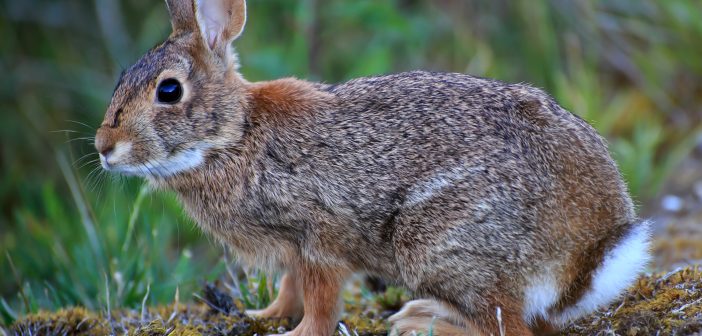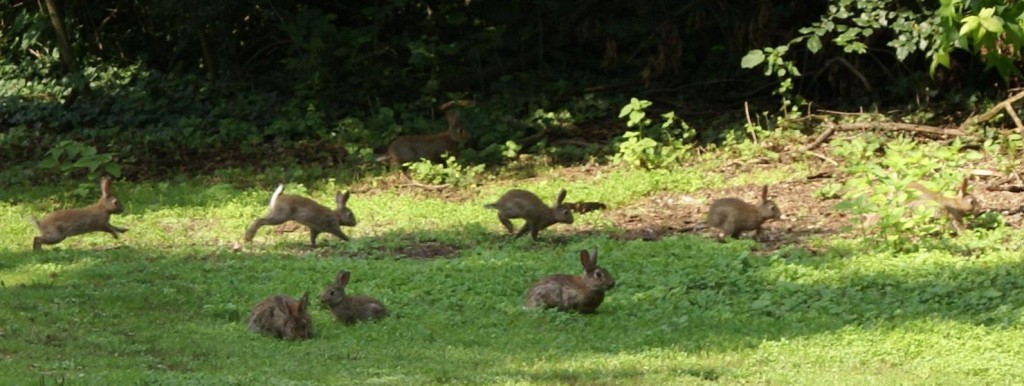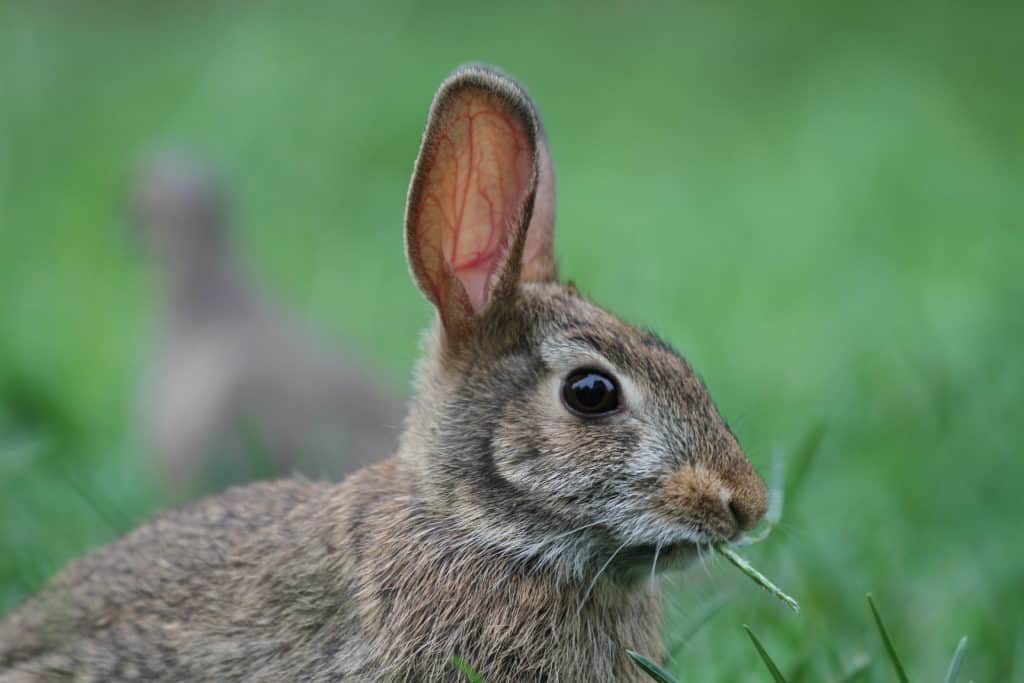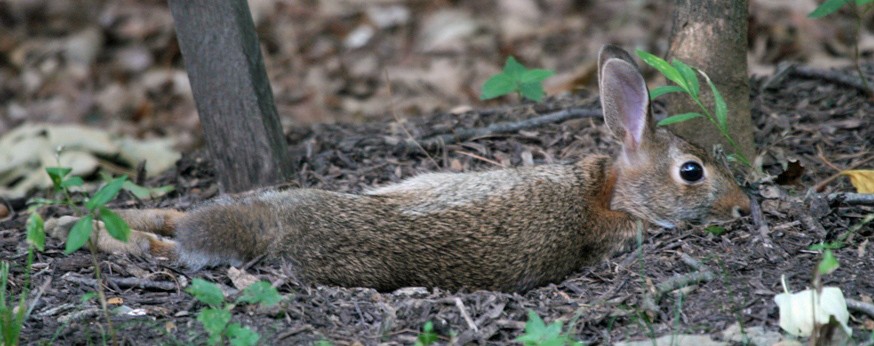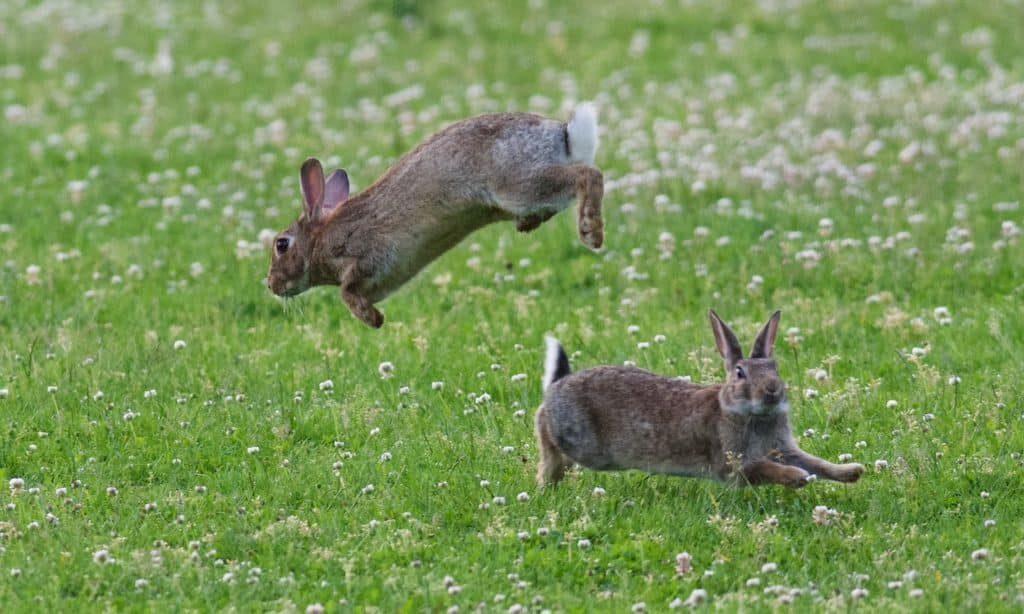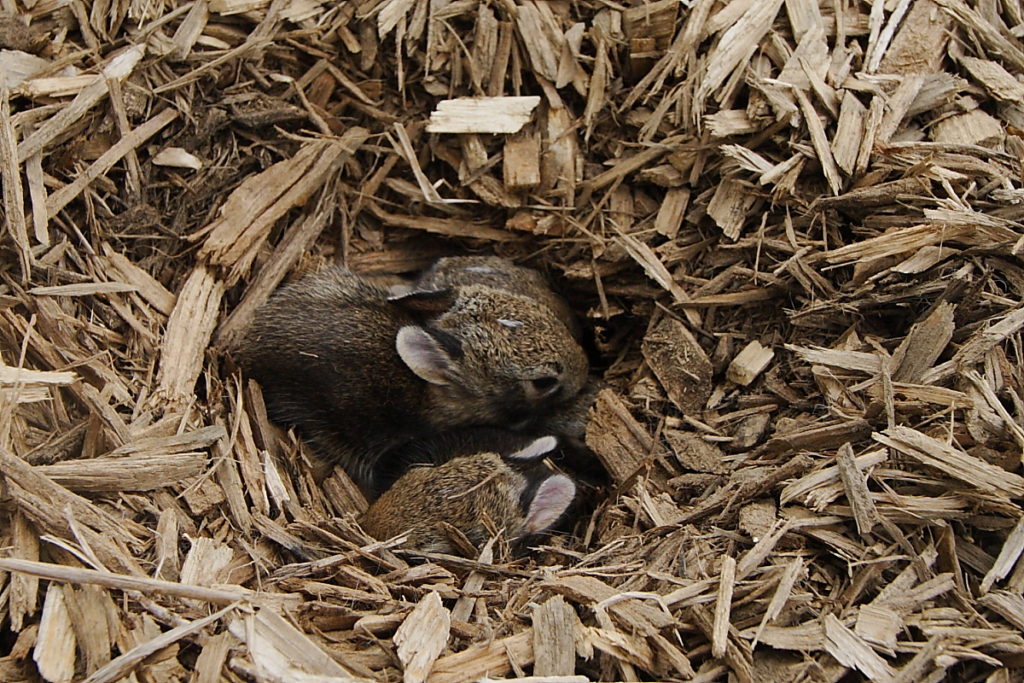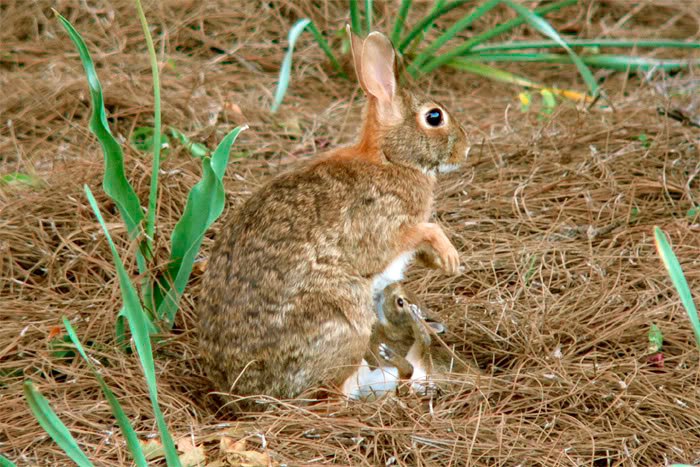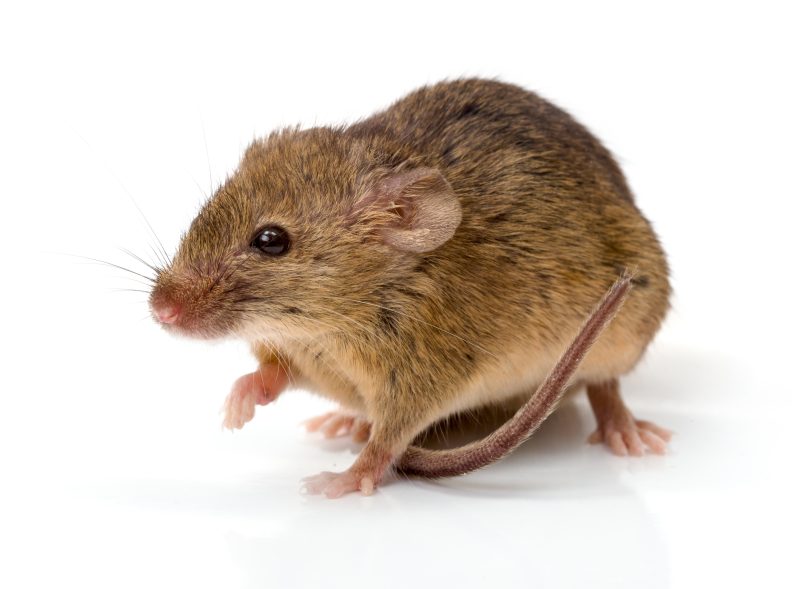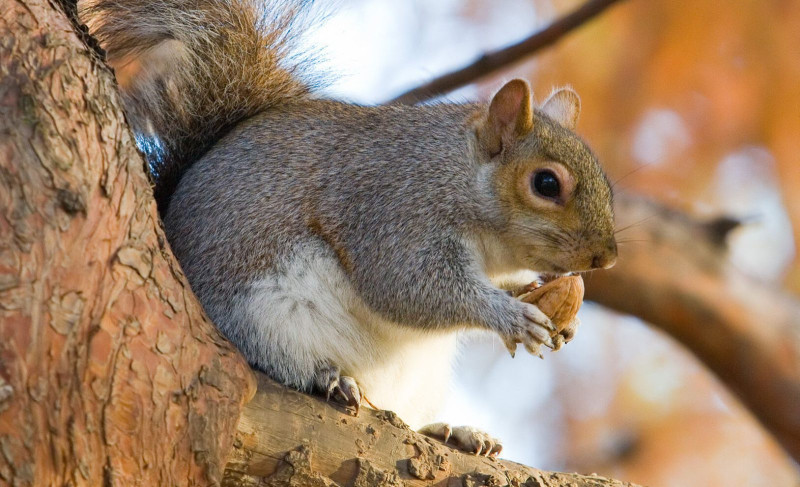Rabbits don’t have it easy. They’re prey for just about everything large enough to catch and hold onto them. They’re lucky if they live for two or three years, even though their potential lifespan is eight to ten years. At least 50 percent never leave the nest. Pity the poor rabbits.
For that alone, it would seem they deserve some easy pickings here and there in their very brief lives. But they can be a troubling nuisance when they nibble on elegant specimen grasses, crop tender branches off precious shrubs, or munch on the flowers of prized plants. Then there’s the leveling they can do to a vegetable patch—that alone can leave a hardworking gardener in despair. But children love them—think of Thumper in Bambi and Walt Disney’s “Bugs Bunny.” Most adults, too—even those who scheme to win in an ongoing garden war with them and often lose!
Background
The oldest complete rabbit fossil, found in 2008 in India, dates back 53 million years to the Eocene Epoch. It was a rabbit that hopped and was very similar to those of today but with smaller ears and a longer tail. In 2011, a gigantic fossil was unearthed on the small island of Mallorca, off the coast of Spain. It was six times the size of today’s four-pound (1.8 kg) cottontails, had smaller eyes and ears, dug for food, and didn’t hop. It’s so unlike other rabbit fossils that researchers believe it developed that way due to its isolation.
Today, there are thirteen species of rabbits. Eight are cottontails that range from Canada to South America. The most widespread rabbit in the United States is the Eastern Cottontail, so this article focuses specifically on them as an example. But, most of what you’ll read here applies to all cottontails—they’re all similar, with the same basic behavior, differing primarily in size, habitat, and range.
Eastern Cottontails, Sylvilagus floridanus, are in the order Lagomorpha and family Laporidae. They range from southeastern Canada down through the eastern half of the U.S. and south to South America. They’ve also been introduced in areas of the U.S. Southwest and Northwest.
Physical description
Named for its white, cottony-looking tail, the Eastern Cottontail is 15 to 19 inches long (38–48 cm) and weighs 2 to 4 pounds (0.9–1.8 kg). Males and females are generally the same size and color.
The hair on the upper part of the body is a dense, buff-brown underfur covered by longer, coarser, gray- and black-tipped guard hairs. In the winter, their coat is longer and grayer. The underside is white. They shed twice a year. The ears are 2 to 3 inches (4.9–7.6 cm) long, held straight up, and can swivel independently.
Cottontails have large, brown, protruding eyes situated high and on the sides of their head. That gives them 360 degrees of vision, except for a small blind spot directly in front. If you were to face one straight on, it would slightly turn its head to get past that blind spot to see you better. Their eyesight is designed for detecting movement, and while good, it lacks the focal precision of a human’s. They have color vision, which appears to be limited to some blue and green wavelengths.
Their teeth are adapted to ripping and gnawing on plants, including tree bark. The upper front teeth grow continuously, which allows the rabbits to munch away without wearing them down. Indeed, the rabbits must gnaw to keep them “filed” to the proper length—teeth that get too long or become maladjusted can prevent them from eating and lead to starvation.
Cottontails are built for speed, jumping, and agility. They have powerful legs and large back feet, which enable them to run up to 18 miles per hour (29 km) for up to half a mile (0.8 km). Not only that, but they can turn on a dime in a zig-zag pattern to confuse predators. If they must, they’re also strong swimmers.
Senses
Have you noticed that rabbits twitch their nose? They do it between twenty and 120 times a minute, and for a good reason: They’re smelling scents in the air. The twitching exposes some of the 100 million sensing receptors in their nose, making an already-exceptional sense of smell even more delicate. (Humans, by comparison, have a mere 5 or 6 million receptors.) Watch a rabbit twitching its nose
They can move their long ears back and forth, and separately, too, which helps them determine a sound’s direction. The ears are also cupped, which helps to catch and amplify sound waves.
Rabbit or hare?
They’re related but not the same. Hares are born with hair, eyes open, and good vision; rabbits are born mostly bald, with eyes closed. Hares are generally larger and have longer legs and ears. They’re also rather solitary while—except for cottontails—rabbits live in social groups and nest in burrows or warrens. Hares typically live in open areas, like deserts, while rabbits do not.
Behavior
Eastern Cottontails are primarily crepuscular (active at dawn and dusk) and spend most of the day hidden within thick cover or, in harsh winter weather, burrows. They occasionally pop out in mid-day to nibble on some food. They have very few sweat glands, so when they get hot in the summer, the blood vessels in their ears dilate to dissipate heat, and they might pant through their nose. Another way they get rid of heat is by lying on cool soil.
Always on the lookout for danger, the rabbits typically move slowly and hop only short distances, then crouch or freeze to avoid catching the attention of predators. If they must flee, they bound away through one of several escape routes they’ve already plotted throughout their range.
The routes may include holes in fences, paths through dense vegetation, or tunnels with multiple exits. If caught, they might play dead by going limp in the predator’s mouth. When the predator drops them, they suddenly race away. If all else fails, they’ll try to fight.
Like other rabbits, Eastern Cottontails fight each other, too: Their ears go back, the chin juts forward, thumping begins, growls are emitted, and a war is on. It can be fierce, with jumping, chasing, biting, and boxing involved. Males fight with other males for females. Females will fight each other for control of a territory. And juveniles play-fight. The origin of the term “rabbit punch” is based on an action sometimes undertaken by a cornered rabbit: It leaps in the air and over the back of its predator. As it sails over, it gives the predator a powerful kick in the head or neck with its hind legs. (Be careful if handling a wild rabbit—they’re surprisingly strong.)
Communication
Cottontails are vocal animals and make many different sounds. They growl and grunt, or may scream if caught by a predator. They can also purr to express contentment. That may evoke the thought of a cat’s throaty rumble, but a cottontail produces a purr by grinding its teeth.
Intelligence and emotions, too
Are rabbits smart? Well, you be the judge: They can recognize their owners, learn their name, and follow simple commands. They can also be flawlessly trained to use a litter box.
As for emotions, studies have shown that humans and animals have the same neural activity in primitive parts of the brain that are associated with emotions.1 Owners of domesticated rabbits claim they show anger, jealousy, love, grief, and other emotions.2
Reproduction
As you may already know, rabbits are birthing machines. Males may be sexually mature at only one month of age, and females within their first year. Eastern Cottontail breeding season is from about January through June, with most offspring born in May and June. Mating and births occur a little later in the north and earlier in southern climates.
Cottontails have an impressive courtship display: A male chases a female until she turns and faces him, after which she stands up on her hind legs and punches him in the ears and face! The two rabbits then sit facing each other. The male moves toward the female and then leaps up to 15 feet (4.57 m) into the air and flips around 180 degrees. Meanwhile, she runs under him and turns 180 degrees. When he lands, they’re both facing each other again. Then, the female does the jump-and-spin while he does the run-and-spin. They alternate doing this repeatedly until mating commences. Whew! That’s the inspiration for the phrase “Mad as a March hare.” The female won’t mate again until after her litter is born.
The female is capable of producing a litter of up to eight or more babies (called kits or kittens) every thirty days. They may have up to five pregnancies per season, but usually only three, each producing four or five kits. A different male fathers each litter and males don’t participate in the parenting.
Nesting and bunnies
Eastern Cottontail kits might be born in an old burrow, but it’s more likely to be a narrow hole 4–6 inches deep (10–15 cm), dug by their mother in tall grasses, under thick bushes, or another place she thinks is safe. She lined it with grass and soft fur she plucked from her own body for insulation.
At birth, the kits are about 4 inches (10 cm) long, deaf, blind, nearly bald, and their ears are flattened. Their mother nurses them for the first time and then covers them with grasses, leaves, fur, or other soft debris. She doesn’t remain with them to avoid attracting attention.
The mother’s milk is so highly nourishing she needs to come to them only twice a day—early in the morning and at dusk. She stays near them for at least part of the day, resting in a slight depression, called a form, that she creates by scraping away or trampling down the soil or vegetation.
The kits snuggle tightly side by side and stay still and quiet. Their eyes open in about a week. In two weeks, they begin taking tentative excursions from the nest, and at about this same time, their long ears start to rise up from their flattened position.
At about 10 days, the kits eat their mother’s “cecotropes“ (SEE-ko-tropes). These are pellets that exit through her anus, but they aren’t feces. Instead, they’re highly nutritious, gel-like, fermented droppings produced in a rabbit’s cecum, a pouch located between the large and small intestines. Cecotropes contain proteins, fiber, B and K vitamins, other nutrients, and gut microbes essential to the digestion of solid food. Without them, the kits’ guts become overwhelmed with abnormal bacteria, and they can die a painful death. (Domestic kits need them, too, at this age, and partly for this reason, it’s challenging to keep orphaned ones alive.)
Adult rabbits of all species produce and eat their cecotropes to re-ingest nutrients, consuming them directly from their anus as they’re expelled. Because they’re taken this way, cecotropes are rarely found. The round, brown pellets we see rabbits leave behind on the ground are true feces. (This re-ingestion of nutrients is akin to deer and other ruminants chewing their cud, which you can read about here: White-tailed Deer)
The cottontail mother visits her kits until they’re eighteen to twenty-one days old. They’d been foraging independently by then but still needed her milk. They grow into fluffy, playful juveniles, jumping into the air and chasing each other around while making low purring, growling, and grunting sounds. All this playing gives them the skills they’ll need to rule their turf, win mates, and save their own lives. They hang around together for about seven weeks and then split into solitary lives. Watch a mother defend her babies from a snake
Food sources
Cottontails are herbivores with 17,000 taste buds (humans have 8,000 to 10,000), so they probably enjoy an exquisite expanse of flavors in, say, salad greens that we humans can’t detect.
In spring and summer, cottontails feed on buds, clover, lush grasses, dandelion heads, flower blossoms, legumes, lettuce, and fruit. In winter, they eat buds, stems, and the bark of woody plants, including young trees. They also eat spilled seeds at bird feeders.
Habitat
Eastern Cottontails are territorial, especially the females during mating season. Neither sex ventures very far from their preferred home turf. They’re active year-round and prefer edge environments—open areas flanked by dense cover, such as meadows, farmlands, the edge of swamps and marshes, residential areas, and forest clearings. They travel a route of relative safety. For instance, one might skirt the side of a woodpile, follow along the front of some thickets, brush through grasses, and finally push through the hedgerow to the meadow. Urban areas can put these fragile animals at a disadvantage against predators because of the lack of thickets and dense grasses.
Defenses
Always looking for danger, cottontails generally move slowly, hop only short distances, then crouch or freeze. Movement draws the eye while staying motionless can hide the animal, as its hair color usually blends into the surroundings. If detected, they bound away through one of their several escape routes. Mahatma Gandhi once said (probably in a different context), “A rabbit that runs away from the bull-terrier is not particularly non-violent.“ One that gets cornered may deliver a “rabbit punch:“ It leaps in the air and over the back of its predator and, while aloft, delivers a powerful kick to the back of its enemy’s head or neck with its hind legs.1 If it gets caught, it’ll fight to its death.
Predators
Rabbits are an important link in the food chain. If their plenteous reproduction rate is any indicator, nature intended it that way. Still, it’s sad to think of how expendable and vulnerable nature has intended them. Predators include owls, crows, hawks, foxes, skunks, coyotes, raccoons, opossums, snakes, weasels, cats and dogs, hunters, and vehicles.
| 1 Bekoff, Mark, “Animal Emotions: Exploring Passionate Natures: Current interdisciplinary research provides compelling evidence that many animals experience such emotions as joy, fear, love, despair, and grief—we are not alone,” BioScience, Oxford Academic, October 1, 2000. https://bit.ly/3JZ8sfh. |
| 2 Davis, Hannah E., “Psychology of rabbits,” bunnyhugga.com, July 26, 2011, https://bit.ly/44KRUBh. |

